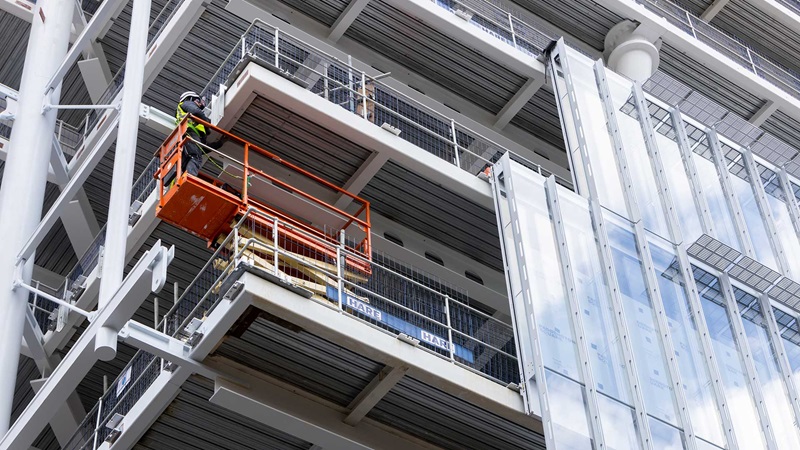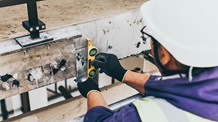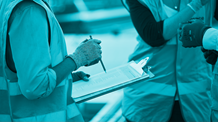Radically rethinking reuse to cut carbon in steel
In the wake of COP27, conversations about decarbonisation must continue at pace. And for these conversations to bring about real change, as an industry, we have to push forward in a number of areas, one of those being the acceleration of our transition to a net zero steel future. But what does the built environment need to do – both right now and in the future – to help make lower carbon steel a tangible prospect?
1000 times stronger than iron, steel is one of the most used commonly used materials on the planet. However, steel has a significant impact on the environment, its production generating 8% of global carbon emissions in 2018.
There are several challenges impacting steel’s carbon footprint, but one of the main obstacles is the manufacturing process, which is typically carbon intensive. Steel is predominantly produced in two ways, with 71% produced using the blast furnace basic oxygen furnace method, which produces 2.5 tonnes of carbon per tonne of steel.
So decarbonising new steel production will be driven largely by powering furnaces with sustainable energy alternatives. Hydrogen-fuelled furnaces are being billed as a promising option, and there are new steel producers entering the market adopting less carbon intensive manufacturing methods.
But as it stands, neither of these alternatives meet the scale of production needed. We don’t have time to wait for manufacturing facility upgrades. To meet the targets outlined in the Paris accords, we need to act now. So what are our options?
By rethinking our approach to design, material use, and collaboration, there are things we can do immediately to reduce carbon in steel. But we must also play the long game; engaging with each other to make better use of resources, while considering the whole life cycle of a building and its component parts.
Reuse is king
When it comes to carbon, reuse of materials will always be preferable to new production. Once steel has been manufactured, it is a permanent resource, so can be infinitely reused – and repurposed - without any loss of material properties.
Repurposing steel involves taking existing beams and columns, trimming, cleaning, and treating them, so that they can be used again without adding carbon to the process. But securing supply of the right grade and section size of steel can pose challenges - in that there are limited reserves.
Steel can also be melted down if it cannot be reused directly, making recycling a viable option. While melting does require carbon expenditure, it still generates less than manufacturing new steel from raw materials. Options like electric arc furnaces can incorporate higher scrap content rates and generates a fifth of the carbon compared to the traditional Basic Oxygen Furnace.
However, because both reuse and recycling are affected by the limited availability of existing steel and supply quantities, the industry must think more broadly.
That’s why we should also be sharing our aspirations with steel suppliers, challenging them to create and find products which meet carbon targets. We can do this by requesting steel and stating the desired level of embodied carbon, instead of defining the manufacturing process or source. This gives suppliers the freedom to source the most carbon efficient way for any given project. As such, this approach doesn't constrain projects to a manufacturing process or single supplier, and engages the steel suppliers’ expertise to find the lowest carbon solution available
Existing structures and circularity in design
However, the simplest way to keep low carbon steel at the top of the agenda is to make more use of refurbishment and reuse existing structures. Promoting partial or complete repurposing of buildings enables reuse of materials in situ, saving a huge amount of carbon. Wherever possible, we should drive clients to opt for refurbishment, instead of demolishing and building from scratch.
We also owe it to future generations to think about what happens at the end of an asset’s life when we're designing new buildings. The buildings we are trying to repurpose now were designed or built 30 to 50 years ago. We should be designing buildings for easier reuse or dismantlement to encourage circularity, creating structures which are easy to repurpose and dismantle. Because if you can dismantle a structure, you can reuse the component parts, reducing the need for raw materials for future projects. Design teams must review architectural intent, structural design, and material availability to assess the options available and constraints of a project - this will enable the lowest carbon solution to be identified.
Acting now
While the use of sustainable energy to decarbonise the steel supply chain will soon be a workable option, we still need to do everything we can right now to decarbonise steel itself. That means sourcing existing steel or refurbishing more to utilise steel already available in a structure - instead of building a new one from scratch. When we do have to build new structures, it means designing and building them as sustainably as possible with the lowest embodied carbon.
And the journey doesn’t stop there. We need to think about the future use of chosen materials by making those structures easy to demount and repurpose, giving a head start to future generations decarbonisation efforts in the built environment.












